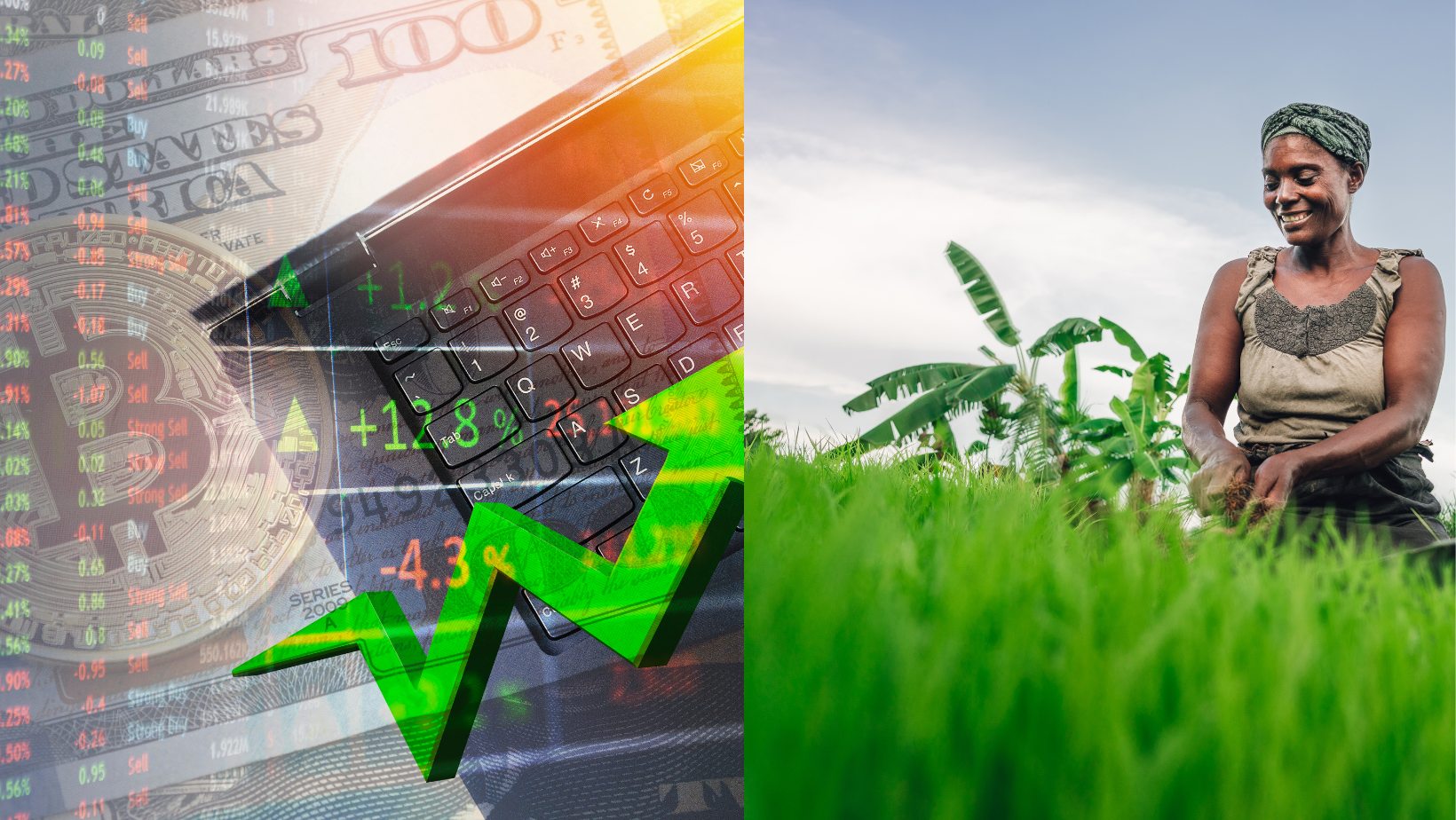Data — the very mention conjures dull and dreary images in our minds. Crypto — far more exciting — draws images of the rise-and-fall, of thrilling new advances and a brave new world.
And yet, where data meets crypto and the underlying technologies behind it, is where the future lies. The intersection and interplay of data and these new, emerging technologies will revolutionize how farming is done across Africa, and indeed the globe.
The time for this revolution is now. Africa still remains a net importer of food despite holding vast areas of arable land and figures show a growing hunger problem as 282 million people are undernourished across the continent, equating to more than one in five people. More specifically, small farms are the dominant form of agriculture, with an estimated 33 million smallholder farms producing around 80% of Sub-Saharan Africa’s food supply, despite being highly susceptible to ongoing weather and market fluctuations.
Added to this, almost half the population of Sub-Saharan Africa is unbanked, meaning they lack access to traditional forms of finance, hindering growth and investment.
Therein lies the opportunity for farmers. As tech excels and revolutionary technologies such as AI and machine learning advance rapidly, solutions are readily available and ready to implement across the board.
Getting the data
Generating data is easy, and there is lots of it to be generated. Farmers know better than anyone what is happening on the ground, but reams of data add a new dimension to understanding how their farm operates on a more intricate level. Through introducing the internet of things (IoT) to farming, a farmer’s crops can be embedded with sensors and other technologies to provide real-time, continuous rafts of data, available at all times and with minimal intervention. This can range from monitoring a specific crop’s required fertilizer levels or predicting expected yield at any moment in time, to understanding the conditions that lead to disease or susceptibility to pests.
As the data flows in, we have the tools to analyze it on the go and give farmers data-driven, digestible insights to better understand crop and farm health. AI and machine learning can be taught to read the data and provide farmers with simple actions to ensure better yield, or to mitigate risks associated with largely unpredictable weather patterns. AI and machine learning have revolutionized how data can be utilized and the trajectory shows all signs of continuing.
These reams of data, now made accessible through technological advances, continue to drive better farming that will only improve as time moves on. While real-time insights and actions impact farmers on a personal level, vast amounts of data also mean farmers no longer operate in self-contained silos; when a farmer in South America makes progress, their equal in Africa can avail of the learnings.
Blockchain too is now being implemented extensively across supply chains as a trusted way of storing data, ensuring immutability for sustainability credentials. In practice, this means any company or individual along the supply chain can check and validate these credentials easily, all the way from farm to fork, with blockchain absolutely guaranteeing the information provided. This promotes not only transparency among all involved parties but also facilitates the storage and collection of reliable data which in turn can feed into more intricate insights.
These technologies are relatively inexpensive to implement and, once up and running, cost little to maintain, and the payout is phenomenal. Farmers also have access to all the info they need on their mobile devices, which is paramount in Africa as reports show an average of 84% of the population owned mobile phones across the continent in 2021 (with some countries averaging over 94%).
In crypto we talk about interoperability; this is interoperability in practice.
Crypto is the key
Many have heralded crypto as the force that will reinvent and reestablish how finance is conducted. Maybe, or maybe not, but what we can already see is that crypto offers a system of financial inclusion for those who may be unbanked or marginalized. As so many in Sub-Saharan Africa are unbanked, crypto offers transparent peer-to-peer transactions without the need for an intermediary such as a traditional, centralized financial institution.
Crypto holds the key to the vault. Where access to a bank is not possible but a farmer has their mobile phone in their hand, they now have access to financial services. Such is the extent of crypto’s financial offering that we are now seeing life insurance companies with Bitcoin-denominated policies and companies offering loans through crypto.
Though in its early stages, industry must now focus its efforts on refining these services to ensure marginalized people in Africa, and further afield, can avail of the everyday services we take for granted in the developed world.
The critical juncture
Driving digital transformation and socioeconomic advancement is no simple endeavor, but farmers in Africa are at a critical juncture, one that presents a fantastic opportunity to truly revolutionize how farming is done across the continent. Time is of the essence, especially as regulation is imposing stricter controls on products. The European Union’s deforestation regulation was introduced in June, with farmers and traders given 18 months to implement the new rules. This regulation, while timely, heavily impacts coffee and cocoa in particular, two major exports across the continent: almost 70% of the world’s cocoa is produced in Africa and 12% of the world’s coffee.
Farmers in Africa, indeed across the globe, have farmed in line with what works best in their environment and with the resources available. Established ways of working, passed down through generations, have ensured farmers could earn a living and feed their families, but legacy obstacles persist in places. Alongside this, we must remember that blockchain, AI and emerging technologies are now coming to the forefront and entering the mainstream psyche.
These technologies offer new avenues and systems for farmers across the globe to enhance their work, but we must acknowledge the context in which they exist. Change does not happen overnight. We are now at the critical intersection of these technologies being recognized as revolutionary, while mobile uptake and internet access in marginalized communities means we can actually deliver the technology to farmers. The final obstacle is simply bringing the technology to those who need it as quickly as we can.
These emerging technologies are positioned to uniquely solve so many challenges facing farmers across the continent. Through crypto, we can democratize finance and bring financial stability and inclusion to those who have so often been marginalized from the conversation. And through innovative technologies such as blockchain, AI and machine learning, we can truly use them to their full potential to help those most in need.
The time is now to bring the technological revolution to Africa that farmers so desperately need.
Credit: Source link















































